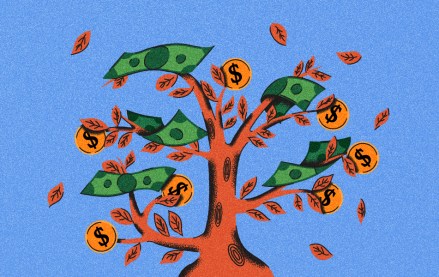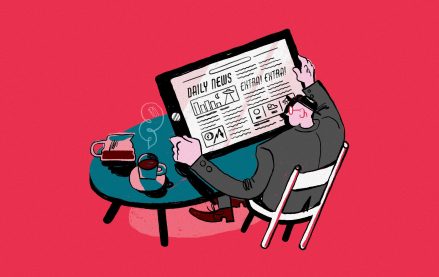
To date, the battle between YouTube and Facebook has centered on winning the hearts and minds of advertisers, online video publishers and creators. If the last few weeks are any indication, there’s another category of content creator YouTube should be concerned about losing some of its value to: TV networks.
On June 15, Amazon (along with Netflix and Hulu, a new breed of TV network) made the first episode of its comedy series “Catastrophe” available for free on Facebook. A week later, HBO did the same with two of its newest series, “Ballers” and “The Brink.”
On the surface, this might not seem like anything special. Online sampling of new programming is not new to TV networks, which are trying everything under the sun to reach audiences who are increasingly watching TV and other video content on digital platforms. What makes it interesting, though, is that YouTube used to be the only place on the Web that guaranteed the biggest video audience possible. Now, not so much.
Declining viewership drives marketing pivot.
“Right now, the world of video content distribution is right on the edge of total chaos,” said James Nail, a principal analyst at Forrester Research. Previously, if a network had a new show to promote, it would use a couple minutes of commercial time during the nightly broadcast. That’s not enough anymore.
And yet, it’s not as if people aren’t watching TV. Cord-cutting is a real phenomenon, according to Erik Brannon, a senior researcher and analyst for IHS Technology. They’re just not electing to pay for television in the traditional manner.
This is why HBO launched HBO Now and other networks like Showtime are following suit — to reach the 10 million broadband households in the U.S. that don’t pay for cable or satellite TV.
By allowing them to sample shows on social platforms, networks can also convince users in these households to pay for their new digital video services.
“Networks need to evolve at a pace that will find consumers as quickly as their behaviors change,” said Jim Marsh, vp of digital and social media for HBO. “Digital sampling is an effective way for us to introduce our programming to our current and potential subscribers. Ultimately we’re trying to create new fans.”
“It’s part of an overall strategy to include households that are excluded,” said Brannon. “Get people hooked and get people subscribing. I don’t think it’s going to result in a heck of a lot of pay-TV adoption. It’s a vehicle for OTT adoption.”
What once made YouTube unique now can also be done by Facebook.
The sampling trend has been good for YouTube. HBO, for instance, has previously released pilots of shows such as “Girls” and “The Newsroom” for free on the video site. But as Facebook makes incredible strides in video, another area that was once YouTube’s exclusive domain no longer is.
“We are always looking for innovative ways to work with our partners, and in this case, we had a new opportunity to work with Facebook to leverage the massive reach of their platform,” said Marsh. “Facebook has made some significant changes to their video capabilities in recent months, which made it possible for us to do this.”
As a platform, Facebook is arguably better at driving viewers to individual pieces of content. “The thing that [Facebook] offers that YouTube doesn’t is an [algorithmic] feed that people check in on multiple times a day,” said Nail. “YouTube, it’s still, ‘Gee, I’ve got to go to YouTube and search for stuff and maybe I’ll stumble on to something new.”
HBO’s Marsh is a bit more diplomatic: “The digital video ecosystem is so interconnected that there is no single best way to get exposure. It’s important that we work closely with all of our partners to reach people on multiple fronts.”
That said, the numbers suggest it’s been a good experiment for HBO so far. “Ballers,” which was uploaded to Dwayne “The Rock” Johnson’s Facebook page on June 24, has accumulated more than 5.5 million views. The first episode of “Brink,” which does not have the benefit of The Rock’s 50 million Facebook fans, netted more than 855,000 views in the same time frame.
The episodes will remain on Facebook for a few more weeks. “Facebook is an incredibly important strategic partner of ours, and we have a history of collaborating in innovative ways, including the ‘Game of Thrones’ red carpet live stream earlier this year,” said Marsh.
Asked if there are any plans to bring the episodes to other social video platforms, Marsh said no, not “at this time.”
More in Media

Media Briefing: Publishers’ Q4 programmatic ad businesses are in limbo
This week’s Media Briefing looks at how publishers in the U.S. and Europe have seen programmatic ad sales on the open market slow in the fourth quarter while they’ve picked up in the private marketplace.

How the European and U.S. publishing landscapes compare and contrast
Publishing executives compared and contrasted the European and U.S. media landscapes and the challenges facing publishers in both regions.

Media Briefing: Publishers’ Q3 earnings show revenue upticks despite election ad pullback
Q3 was a mixed bag for publishers, with some blaming the U.S. presidential election for an ad-spend pullback.





